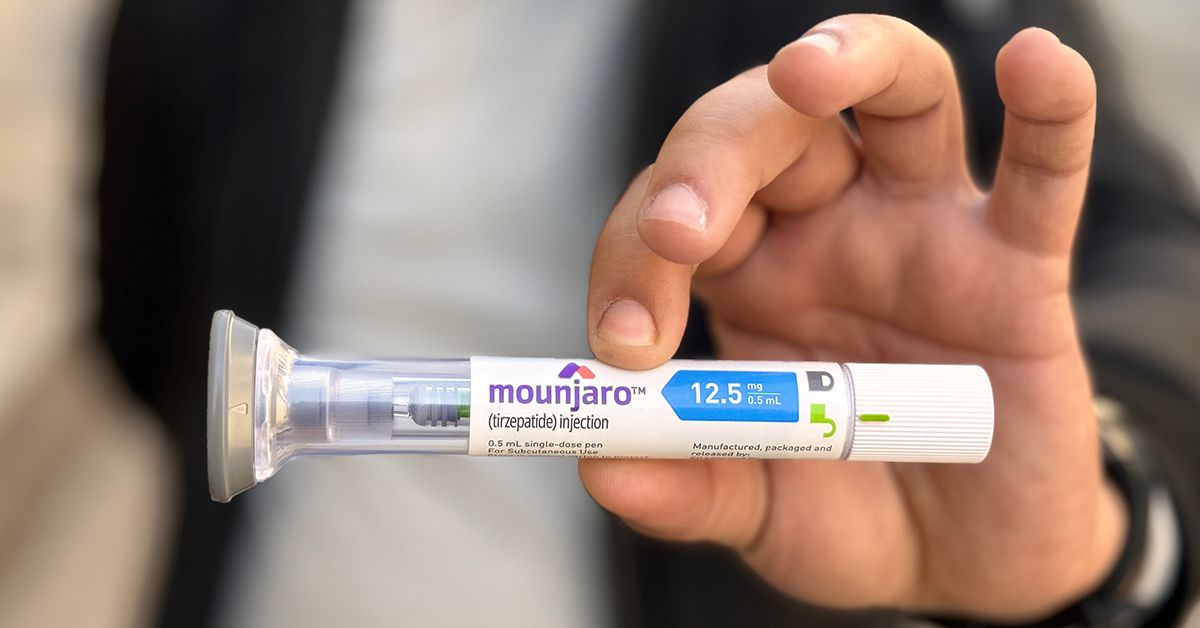Is Mounjaro Injection Safe? Pros and Cons

Mounjaro (tirzepatide) is a revolutionary injectable medication approved for managing type 2 diabetes and increasingly prescribed off-label for weight loss. Developed by Eli Lilly, it has captured significant attention due to its dual action on GLP-1 and GIP receptors—two hormones that help regulate insulin and appetite. As the demand for powerful diabetes and weight-loss solutions rises, many people are asking: Is Mounjaro injection safe? In this comprehensive guide, we’ll explore its safety profile, advantages and disadvantages, common concerns, and the best way to use it responsibly.
In addition to discussing the pros and cons, we’ll address a commonly searched question: How much is the cost of Mounjaro injection? The answer to this depends on multiple factors, including location, insurance coverage, and pharmacy choice. While we won’t discuss specific prices here, understanding the value of the medication helps consumers make informed decisions about whether Mounjaro is right for them.
What Is Mounjaro?
Mounjaro is a once-weekly injectable medication designed to help manage blood sugar levels in adults with type 2 diabetes. The active ingredient, tirzepatide, is a first-in-class dual GIP and GLP-1 receptor agonist, which means it targets two key hormones that regulate glucose and appetite.
Unlike other GLP-1 drugs (such as Ozempic or Wegovy), Mounjaro offers a unique mechanism that enhances insulin secretion, reduces glucagon production, and slows digestion, leading to improved blood sugar control and significant weight loss. These effects have made it increasingly popular not only for diabetics but also among those seeking medically supervised weight management solutions.
Pros and Cons of Mounjaro Injection
Before starting Mounjaro, it’s essential to weigh the potential benefits and drawbacks. Here’s an overview:
✅ Pros of Mounjaro Injection
-
Dual Hormone Action
Mounjaro is the first medication that activates both GIP and GLP-1 receptors, offering more robust blood sugar control compared to GLP-1-only medications. -
Effective for Weight Loss
Clinical trials show that patients can lose 15% or more of their body weight, which is higher than many other weight-loss injections. -
Cardiovascular Benefits
Preliminary studies suggest improvements in cholesterol levels and blood pressure, which may reduce the risk of heart disease. -
Convenient Dosing
Only one injection per week is required, making it easier for patients to stay consistent. -
Improved A1C Levels
Patients often see significant reductions in their HbA1c levels, a key indicator of long-term blood sugar control.
❌ Cons of Mounjaro Injection
-
Gastrointestinal Side Effects
Nausea, vomiting, and diarrhea are common, especially when starting or increasing the dose. -
Potential for Pancreatitis
As with other incretin-based therapies, there is a rare but serious risk of developing pancreatitis. -
Not Approved for Weight Loss (as of now)
Though widely used off-label for weight management, Mounjaro is currently only FDA-approved for type 2 diabetes. -
High Cost Without Insurance
Mounjaro can be expensive if not covered by insurance, which may be a barrier for many patients. -
Long-Term Safety Unknown
While short-term results are promising, the long-term safety profile is still being studied.
Comparison of Mounjaro vs Other Injectables
| Feature | Mounjaro (Tirzepatide) | Ozempic (Semaglutide) |
Wegovy (Semaglutide for weight loss)
|
| Type | GIP + GLP-1 Agonist | GLP-1 Agonist | GLP-1 Agonist |
| FDA Approval | Type 2 Diabetes | Type 2 Diabetes | Obesity |
| Weight Loss (%) | Up to 22.5% | 12–15% | Up to 15% |
| Injection Frequency | Weekly | Weekly | Weekly |
| Common Side Effects | Nausea, Diarrhea | Nausea, Diarrhea | Nausea, Vomiting |
Common Side Effects of Mounjaro
| Side Effect | Frequency |
| Nausea | Very Common |
| Diarrhea | Common |
| Decreased Appetite | Common |
| Vomiting | Common |
| Constipation | Less Common |
| Abdominal Discomfort | Less Common |
Who Should Avoid Mounjaro?
| Condition | Recommendation |
| History of pancreatitis | Avoid unless under specialist care |
| Medullary thyroid carcinoma | Contraindicated |
| Type 1 diabetes | Not approved |
| Pregnancy or breastfeeding | Not recommended |
| Severe gastrointestinal disease | Use with caution |
How Does Mounjaro Work?
Mounjaro’s mechanism of action combines GIP (glucose-dependent insulinotropic polypeptide) and GLP-1 (glucagon-like peptide-1) receptor agonism. Here’s how it benefits the body:
-
Increases insulin secretion when blood sugar is high
-
Suppresses glucagon, which normally raises blood sugar
-
Slows gastric emptying, helping people feel full longer
-
Reduces food intake by signaling satiety to the brain
This dual action leads to more effective blood sugar control and significant weight reduction.
Is Mounjaro Injection Safe?
Yes, Mounjaro is generally safe when prescribed and monitored by a healthcare provider. However, it is not without risks. While most people tolerate the medication well, some experience gastrointestinal issues or require dose adjustments to reduce side effects.
Long-term safety is still under investigation, especially for off-label uses like weight loss in non-diabetics. Patients with a history of certain thyroid cancers or pancreatitis should avoid Mounjaro unless directed otherwise by a specialist.
Who Can Use Mounjaro?
Mounjaro is approved for adults with type 2 diabetes. It is also being studied for use in:
-
Overweight individuals without diabetes
-
People with metabolic syndrome
-
Patients with cardiovascular risk factors
Your doctor will evaluate your medical history, weight goals, and lab results to determine if Mounjaro is appropriate.
FAQ’s:
Is Mounjaro injection safe?
Yes, Mounjaro is considered safe for most adults with type 2 diabetes, but it should be prescribed and monitored by a healthcare provider.
How does Mounjaro differ from Ozempic?
Mounjaro targets both GIP and GLP-1 receptors, while Ozempic only targets GLP-1. This dual action may lead to greater blood sugar control and weight loss.
Can Mounjaro be used for weight loss?
Yes, though not officially approved for weight loss yet, many doctors prescribe it off-label for this purpose due to its effectiveness.
How is Mounjaro administered?
Mounjaro is injected under the skin once weekly, usually in the abdomen, thigh, or upper arm.
Can pregnant women use Mounjaro?
No, Mounjaro is not recommended during pregnancy or breastfeeding.
Is Mounjaro covered by insurance?
Coverage varies. Some insurance plans cover it for type 2 diabetes, while others may not approve it for weight loss purposes.
How long before I see results?
Many people report improvements in blood sugar and appetite control within 2–4 weeks. Weight loss often becomes noticeable after a few months.
What are the most common side effects?
Nausea, diarrhea, and reduced appetite are the most common side effects, especially when starting treatment.
Is Mounjaro a lifetime medication?
Not necessarily. Some patients use it short-term for weight loss, while others with diabetes may require long-term use.
How much is the cost of Mounjaro injection?
Prices vary depending on the country, pharmacy, and insurance. In regions like the UAE, it’s best to contact local pharmacies for current rates.
🌟 Final Thoughts
Mounjaro injection represents a groundbreaking advancement in the treatment of type 2 diabetes and weight loss. With its dual-hormone action and superior results in blood sugar control and weight management, it has quickly become one of the most discussed medications in modern endocrinology. However, its safety profile must be considered carefully, particularly for individuals with certain preexisting conditions.










